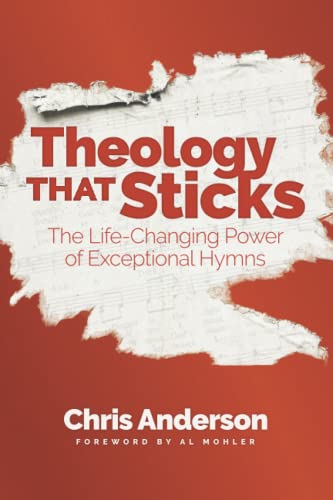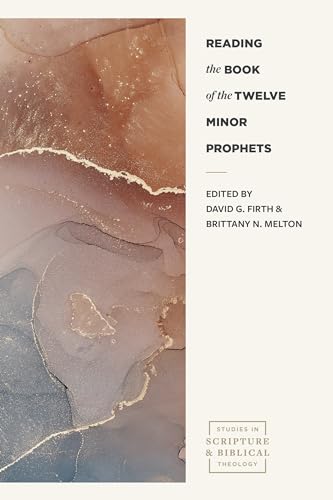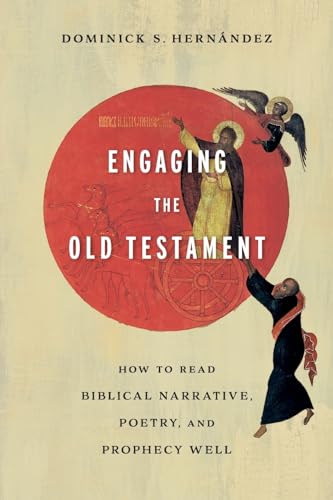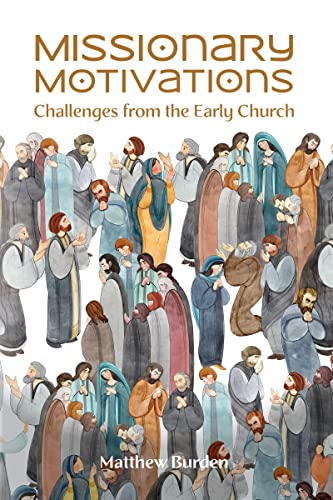Biblical Critical Theory: How the Bible’s Unfolding Story Makes Sense of Modern Life and Culture
Written by Christopher Watkin Reviewed By Carl TruemanThe summer of 2020 is memorable for many things, none of them particularly positive: Covid, the death of George Floyd, and social turmoil across many western countries, focused particularly on the colonial past of Europe and the United States. And, in the midst of all the chaos, the term ‘Critical Theory’ (CT)—specifically in the form of ‘Critical Race Theory’—entered common parlance. Once a highly specialized phenomenon of little current interest outside postgraduate seminars in the humanities, suddenly everyone—especially those with Twitter accounts and personal blogs—was an expert in the field. Most surprising of all was how many Christians seemed eager to be in on the action. And so, CT moved into the mainstream, becoming a point of conflict at school boards, institutions of higher education, and churches, both locally and at the denominational level. Indeed, it became a shibboleth, a tribal marker with the simple question, ‘Are you for it or against it?’, requiring a simple yes or no answer as a test of orthodoxy on both sides in the discussion.
Yet the problem with such an approach is obvious: CT is not a unified phenomenon, nor is its literature easy to understand. With one stream of CT finding its roots in Hegel and the other in French post-structuralism, the field is rife with rebarbative prose, opaque arguments, and slippery conclusions. And the highly politicized role CT has come to play in current cultural discussions makes it hard to find a reliable guide to the issue and, even more importantly, a sound proposal for a Christian response and alternative. Christopher Watkin seeks to address this lacuna in his major book, Biblical Critical Theory.
CT seeks to do two basic things. It strives to expose the contingent nature of the reality we as human subjects experience and in which we participate; and it aims by so doing to alter the way we think and relate to the world around us. Further, at the core of CT, whether of the Marxist variety associated with the Frankfurt School or the post-structuralist variety connected to Michel Foucault, is the notion that power and manipulation lie behind the apparently natural but in reality socially constructed world we inhabit. So understood, CT has clear affinities with Christianity. Christianity claims that the world and our perception of it are distorted by sin, that we live according to lies, and that all human relationships are marked to some degree by selfishness. What Watkin does is build on these and other affinities in order to move beyond knee-jerk and simplistic ‘Boo!’ or ‘Hooray!’ alternatives and to mark a path forward.
The guiding light of Watkin’s project is Augustine, whose City of God is arguably the first and greatest example of what a Christian CT might look like. In the course of that work, Augustine debunks the myths Rome told about itself, often by way of what later critical theorists would dub immanent critique, exposing the contradictions of Rome’s own narrative as a means of clearing the ground. Augustine also uses the biblical plotline to provide a grand explanatory scheme for his relativization of Rome and his assertion of the superiority of the gospel, something the contemporary theologian John Milbank refers to as ‘out-narrating’.
Watkin deploys all of these elements in his own development of Biblical Critical Theory. Using the overarching biblical metanarrative to frame his analysis, he moves deftly from Christian doctrine to critique of some of the most pressing issues of our day. Much of what the book contains will be familiar to Themelios readers as it is solid biblical theology. The discussions of creation, fall, redemption and consummation follow familiar lines, along with those of key biblical genres, such as prophecy and wisdom. Indeed, it is in his discussion of the prophets—the great exemplars of Biblical Critical Theory—that Watkin excels. If, as Marx’s Theses on Feuerbach state, the point is not to describe the world but to change it, then the prophetic imagination is surely critical.
So, what is it about Watkin’s work that makes it critical and not simply a re-presentation of standard biblical theology? The answer lies above all in his deployment of what he calls diagonalization. If a broadly covenantal scheme shapes the narrative, it is diagonalization that drives the analysis. This is the idea that many of the things human beings tend to conceptualize as opposites can be overcome when viewed from a biblical perspective that refuses to accept the (humanly constructed) opposition.
In one sense, this is a repackaging of a perennial kind of problem: How does one reconcile the one and the many, being and becoming, freedom and determinism, autonomy and dependence? These questions have preoccupied philosophy since the era of the pre-Socratics. Watkin’s approach is to begin with God, in whom things dwell in perfect harmony—despite the fact that we sometimes place these things in opposition to each other (his love and his justice, for example). He then demonstrates how modern culture either demands that we affirm one or the other or adopt a synthesis of the two that produces an unsatisfying compromise—a tertium quid, or ‘third thing’, to use the technical theological term (‘neither fish nor fowl’, to use the untechnical non-theological expression). Finally, he moves to showing how the truths that exist harmoniously in God are manifested in the gospel, albeit in a way that is unexpected.
The obvious example is, of course, the cross: fallen human beings often place mercy in opposition to justice or develop a synthesis that is neither just nor merciful. The cross binds both together but, as the reactions of Greeks and Jews show, does so in a way that is unexpected and incomprehensible outside of the context of faith. There are, of course, many other places where this can be seen throughout Scripture. Indeed, Watkin ends his book with a discussion of attitudes to culture, noting that the West tends to see itself as normative and superior while others make all cultures equal. The gospel refuses this dichotomy, however, proposing a transcultural message that places all human efforts to make God in man’s image under judgment.
This is a rich volume on a complex subject and any complaint that ‘the author missed this topic’ risks sounding gratuitous. Nevertheless, the book provoked several thoughts in me that the reader might wish to reflect on further. First, it is odd that little to no attention is paid to the Frankfurt School. This is no doubt a function of Watkin’s work in French studies and his familiarity with and skill in expounding French critical thought. Further, as there are a number of affinities between the two streams, this is in no way a serious flaw. Yet the Hegelian Marxist stream has much to offer any discussion of CT, and its commitment to the dialectical movement of history is helpful in understanding why, for example, culture changes over time and the oppositions Watkin identifies shift and morph. Redemptive history has clearly differentiated epochs, each with its own theological logic. But profane history is messier, and analyzing how concepts such as love and justice are understood in different times and places is a historical task. Watkin does cite Terry Eagleton numerous times, and he has certainly drawn positively from the early critical theorists and Frankfurt School associates, particularly Walter Benjamin, but it is odd that there is not more interaction with this stream.
This raises a second area of interest. Diagonalization seems to work best where the categories being ‘diagonalized’ are both morally equivalent and stable. Yet often neither of these applies. As to equivalence, I wonder, for example, if ‘Conservative/Evolutionary Progress’ and ‘Progressive/Revolutionary Transformation’ are really parallel (p. 554), given that the latter has accounted for incalculable suffering and bloodshed compared to the former? Watkin may not intend to indicate moral equivalence, but the reader could be forgiven for drawing that conclusion. As to stability, given that there is often no agreement (and sometimes fierce debate) about how terms such as ‘justice’ and ‘racism’ should be understood, the possibility of diagonalization seems to be put into serious question as a practical strategy.
Further, human beings are complicated, inconsistent creatures. Nobody is a pure individual or completely subsumed by the community. All of us live in different realms—family, workplace, geographical location, online. Life does not consist of polarized opposites but often of overlapping identities that sometimes reinforce each other, sometimes contradict each other. Life, in short, is complicated. And that means there is always a danger that a theoretical model can become not merely a helpful heuristic device but a tool for eliminating necessary complexity. For instance, Watkin’s reference to Brexit, dividing the sides into those who prioritized the local and the particular over those who prioritized the universal, is far too simplistic (pp. 363–64). Issues of geography (London versus the rest), economy (those who do well out of globalization versus those whose jobs have been eliminated or jeopardized by it), workplace (the so-called ‘laptop’ class who can work anywhere versus the worker who has to be in a certain location), and those who prize technocracy versus those who value democracy, were all part of the Brexit phenomenon. To simplify it into local versus universal is simply naïve and misleading and not actually very ‘critical’ at all. The analytical model seems to function here not to illuminate the issue but to demand that a very complicated issue be forced to conform to a Procrustean bed predicated on not very complicated categories. It also left me wondering if a critical theorist of a different stripe might not accuse Watkin’s diagonalization of being exactly what he insists it is not: a kind of inoffensive ‘third way’ that serves primarily to bolster his own kind of evangelicalism (see pp. 19–21).
But none of this is meant to detract from Watkin’s remarkable achievement. This is a very learned book, replete with stimulating arguments and ideas. These criticisms are thus intended not to highlight fatal flaws but to indicate, as Watkin himself urges, that the conversation about CT in Christian circles should continue. Indeed, his hope in writing Biblical Critical Theory is to make it ‘just a little easier for others to come after [him] and do the real labor of deploying a range of biblical figures as they carefully and painstakingly work through complex social questions’ (p. 605). And so, as that important task proceeds, we can be grateful that it will now do so enriched by Watkin’s graceful volume.
Carl Trueman
Carl Trueman is Professor of Biblical and Religious Studies at Grove City College in Grove City, Pennsylvania.
Other Articles in this Issue
Menzies responds to Tupamahu’s post-colonial critique of the Pentecostal reading of Acts and the missionary enterprise...
The Lamblike Servant: The Function of John’s Use of the OT for Understanding Jesus’s Death
by David V. ChristensenIn this article, I argue that John provides a window into the mechanics of how Jesus’s death saves, and this window is his use of the OT...
Geerhardus Vos: His Biblical-Theological Method and a Biblical Theology of Gender
by Andreas J. KöstenbergerThis article seeks to construct a biblical theology of gender based on Geerhardus Vos’s magisterial Biblical Theology...
Is the One God of the Old Testament and Judaism Exactly the Same God as the Trinitarian God—Father, Son, and Holy Spirit—of the New Testament and Christian Creeds?
by John Jefferson DavisThis article argues that the One God of the Old Testament and Judaism is exactly the same God as the Trinitarian God of the New Testament and Christian creeds...
A well-known Christian intellectual and cultural commentator, John Stonestreet, has often publicly spoken of the need for Christians to develop a theology of “getting fired...







